Table of Contents
As bonsai options differ in terms of leaves, style, pattern, shape, flowers, and many other factors, each genus factor has a variety that is best in its respective category. When it comes to flowers that can enhance the view of any part of your house and look adorable, hibiscus bonsai can beat any other option in the whole world. Its flowers have a unique pattern and the large size of leaves make it easy for the home residents to shape them according to their desires using the pruning or wiring processes.
Hibiscus bonsai’s shape and patterns make it popular among bonsai plants but its variety that comes with a wide range of different shades in terms of flowers and leaves is another most prominent reason that makes it stand out. As there are various minor to major aspects that need to be known before going on to having a hibiscus bonsai at home, continue reading this guide as it will cover all those aspects in the best way possible.
| Species | Hibiscus |
| Average Height | 12 to 24 inches (but can be grown as long as you want) |
| Average Spread | 12 to 18 inches |
| Origin Country | China, Pacific Islands, India |
| Flower Bloom Time | April to November, Starts in mid to late summer i.e. August |
| Varieties | Hibiscus tiliaceus, Hibiscus Taiwan, Sleeping hibiscus, Dwarf hibiscus, Hibiscus syriacus, Sea hibiscus bonsai, Hibiscus Acetosella, Hibiscus Acetosella, Hibiscus Rosa Sinensis, Hibiscus moscheutos, Hibiscus Schizopetalus |
| Family | Malvaceae |
| Leaf | Evergreen |
| Water | Moderate to High |
| Sunlight | Moderate to High |
| Maintenance | Low to Medium |
| Growth | Fast/Rapid |
Can we bonsai hibiscus?
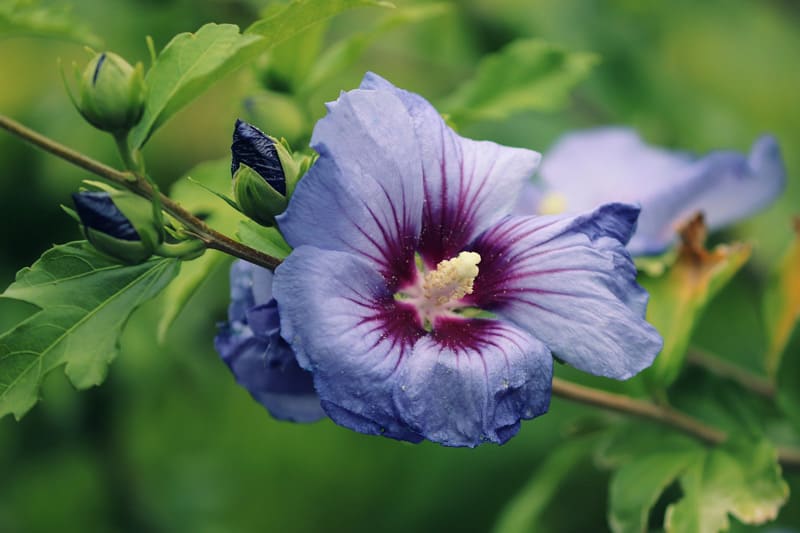
Yes. We can bonsai Hibiscus plants. Hibiscus plants have a unique leaf and flower size and their trunk has the ability to change their thickness if you plant it in different containers such as a tub, small pot, or directly into the ground.
Hibiscus comes from different parts of the world and you need to choose the one that suits you best for the weather conditions in your region. You may also need to adjust the sunlight and watering with varying types of hibiscus as they differ a bit in some aspects.
Although all these factors matter a lot, any kind of hibiscus tree can be converted into a bonsai. All you need is to go through a proper process and you will surely get the desired results.
Hibiscus bonsai history
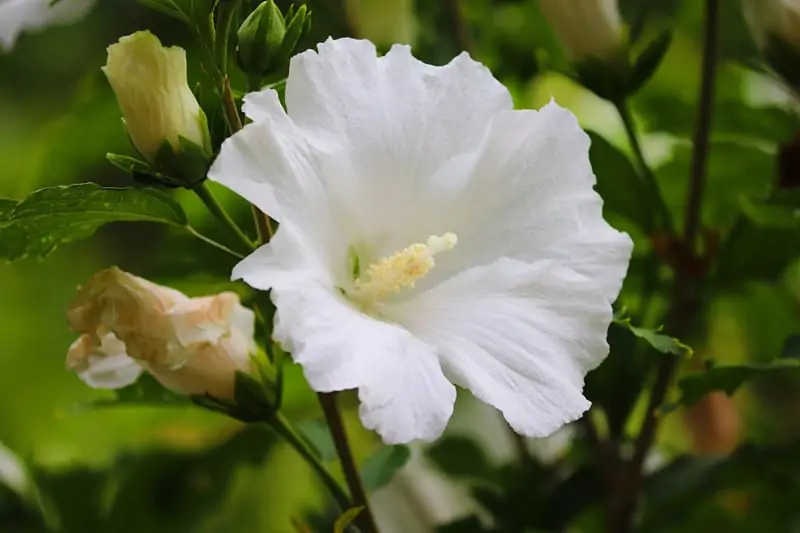
Hibiscus is one of the most charming bonsai options because of its flowers that come in different shades and some varying shapes as well.
It is mainly included in the mallow family and has a wide range of varieties and species, maybe hundreds if not a thousand.
Hibiscus bonsai tree originated from varying subtropical and tropical regions. It would be better to say that it can be found in almost all regions in the world that have a climate with warm temperatures.
You may not find a single plant where the temperature remains low or below the freezing point as they can barely survive a week in such climate conditions.
Firstly, they were just treated as a common plant but became popular because of flowers and leaves that usually come in several hundred color combinations that too may change with changing seasons and sometimes changing weather conditions as well.
All these things have made it one of the most preferred bonsai plants in almost no time.
Hibiscus bonsai care
Hibiscus bonsai require minimum maintenance and care and can easily grow and thrive even if you treat them like any other normal tropical plant.
The most crucial thing is the temperature as you need to protect it from frosts and extremely cold temperatures because they may not grow properly if exposed to such climate conditions for a long time.
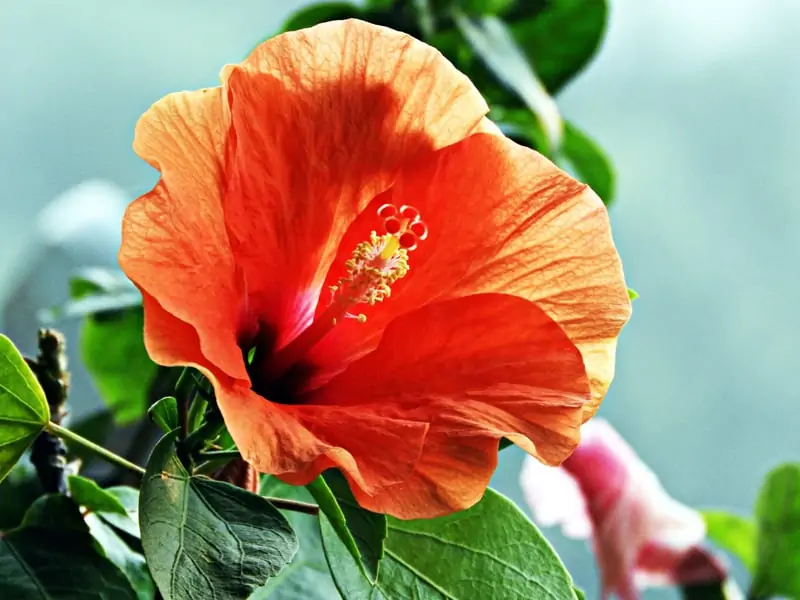
Hibiscus bonsai temperature
- As said earlier, hibiscus bonsai love warm climates and can easily withstand any temperature above the freezing or near freezing point.
- Any temperature below 10 C or 50F can be lethal for the hibiscus bonsai.
- If you place hibiscus bonsai in the temperature almost near to the freezing point such as 2C or less, it can badly affect its leaves and may kill the plant.
Hibiscus bonsai fertilizer
- Solid organic fertilizer or water-soluble liquid fertilizers, both work best for hibiscus bonsai.
- You should add fertilizers a minimum of once a month and if there is an attack of pests or diseases, you may increase the frequency to twice.
- You may use fertilizers to increase the number of flowers to boost the blooming process.
- Make sure you don’t fertilize in an extreme amount for the sake of flowers as it can have side effects in the long run.
Hibiscus bonsai pruning/trimming
- During the initial growing stage of hibiscus bonsai, trimming and pruning should be done on a regular basis to boost the ramification process while shaping the plant according to your desire.
- Trim the extra-long branches or leaves on a mature plant, if you like to.
- It is beneficial not to trim or prune during June as it can affect the quantity of the blooming flowers.
- Handle branches and stems with great care as they can break down easily while bending or wiring for shaping purposes.
Hibiscus bonsai repotting
- Hibiscus bonsai trees should be repotted in a new container, soil, or environment, once in a couple of years.
- Make sure that the new container has a bit more nutrients and healthy ingredients so that they can allow the bonsai roots to take place in a new environment and grow in a more efficient manner.
- While repotting bonsai, you don’t only need to trim the branches and leaves but you should also trim roots so that they can grow easily in new soil.
- Removing dead or unhealthy roots is recommended so that they don’t inherit issues in other roots as well.
- Make sure you use a big pot because providing good space for roots to grow will bloom more flowers onto the plant which will eventually enhance its looks and charm.
Hibiscus bonsai pests and diseases
- Hibiscus is one of the few trees that have minimum chances of getting attacked or affected by pests and diseases.
- Watering impure or calcareous water can sometimes lead to the emergence of chlorosis which could cause issues.
- Getting help from fertilizer, especially the ferric one in case of chlorosis, could bring all positive results.
Do hibiscus bonsai attract hummingbirds?
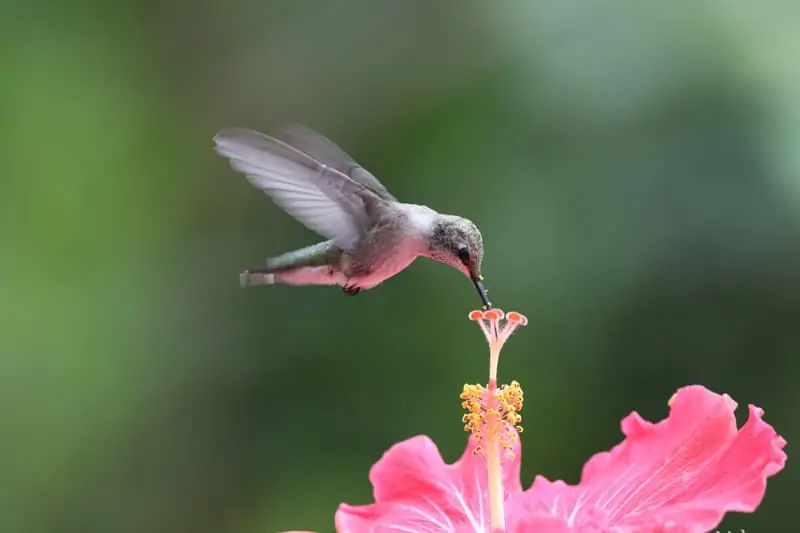
As hibiscus bonsai have evergreen leaves along with big size flowers that have a shine in their shade, hummingbirds can be attracted towards it even if it doesn’t fall in the rose flowers category.
Hummingbirds are attracted to beautiful shades of flowers and hibiscus bonsai is a full package as it comes in flowers ranging from white and pink to red, maroon, and purple as well.
Do hibiscus bonsai attract bees?
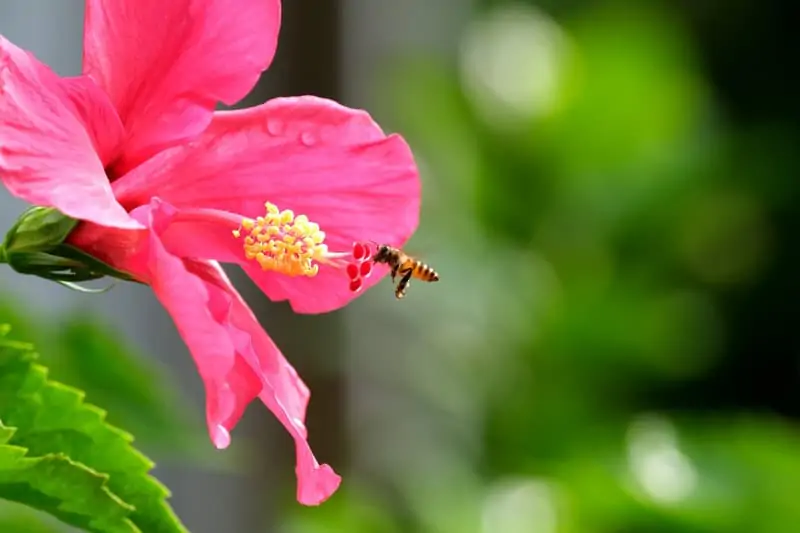
Hibiscus is well known for producing a huge amount of nectar just like roses and some other flowers. Only this one reason is good enough to attract bees very often.
Bees require this nectar so that they can produce honey while hummingbirds come for this nectar as it is one of the major sources of their routine nutrition.
Hibiscus bonsai soil
- Providing a soil with the best availability of nutrients is essential because bonsai is going to take all its requirements from a small container of bonsai soil.
- Having compost, organic fertilizers, and a full-fledged package of soil including all its ingredients can give a boost to the growth of its followers, leaves, and color shades as well.
- All these factors should also be considered at the time of repotting as soil plays an important and the most crucial role in the growth of any bonsai.
Does hibiscus bonsai like acidic soil?
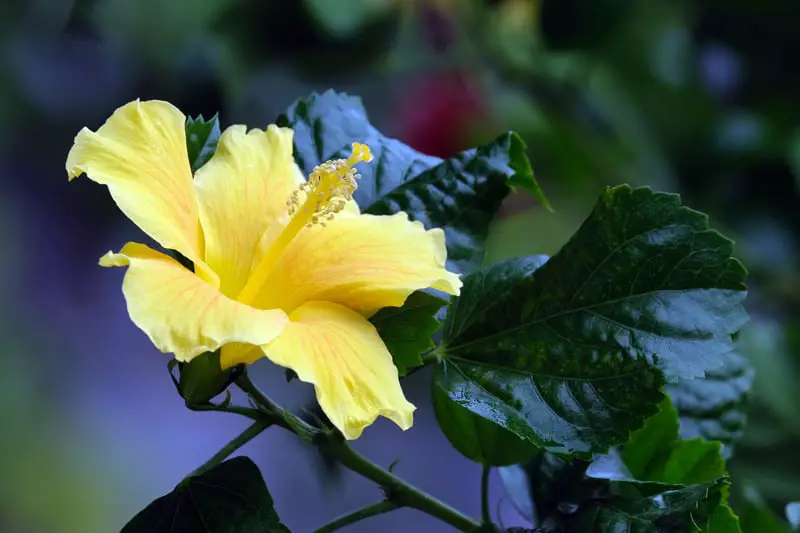
The best suitable soil for the hibiscus bonsai tree is the one that has a pH level of about 6.5 to 7 and it clearly means that it loves to grow in slightly acidic soil. You may test the soil every two weeks to see if the pH level is still the same and perfect for the hibiscus bonsai trees.
Do hibiscus bonsai like coffee grounds?
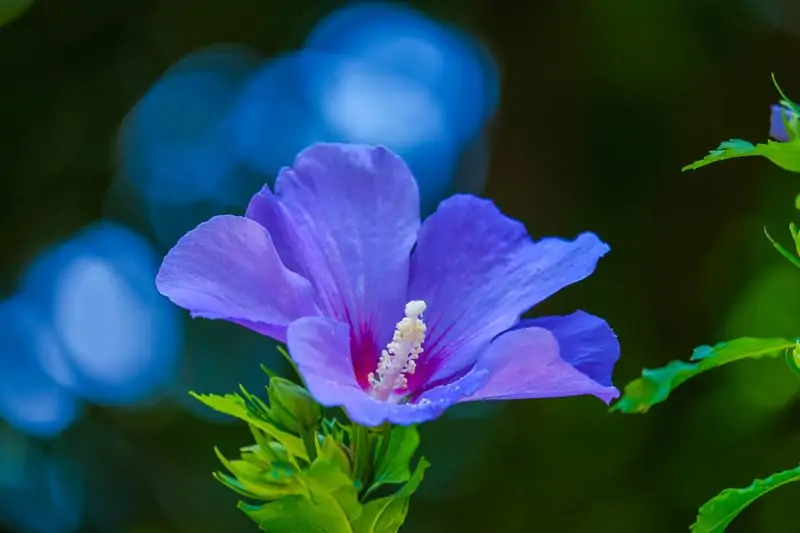
Do bonsai trees like coffee grounds? Coffee grounds also have slightly acidic soil which is considered best suitable for hibiscus bonsai trees. The issue may occur in terms of pH level as coffee grounds usually have a pH level of 3.0 to 3.5 which is relatively low for hibiscus bonsai. If you can tackle this factor of pH level, your hibiscus bonsai would love to thrive in coffee grounds.
Hibiscus bonsai watering
- Watering should be done on a regular basis as hibiscus bonsai cannot bear complete dry out of the soil. If the soil remains dry for a time that roots don’t have enough moisture, the flowers and the buds can shed dramatically.
- Do keep this fact in mind that hibiscus bonsai loves to have slightly acidic soil and this factor restricts you from overwatering your bonsai tree.
- Where under-watering can cause shedding issues, overwatering can rot the roots and sometimes stop blooming and growth as well.
Hibiscus bonsai sunlight requirements
- Although hibiscus bonsai trees can grow efficiently in partially shaded areas, providing full sunlight would be ideal as they love maximum light.
- Experts claim that you should expose your hibiscus bonsai to sunlight for about 4 to 6 hours on a regular basis but if the temperature is adequate, you may go for 8 hours. Only make sure that you don’t burn leaves of bonsai.
- If you are not able to move bonsai outdoors on a regular basis, place bonsai right in front of a window where sunlight comes directly inside the room.
- Do keep this fact in mind that the more you expose light to your bonsai, the more growth and blooming will occur and these are the most prominent things that a person wants from their hibiscus bonsai.
Types of hibiscus bonsai
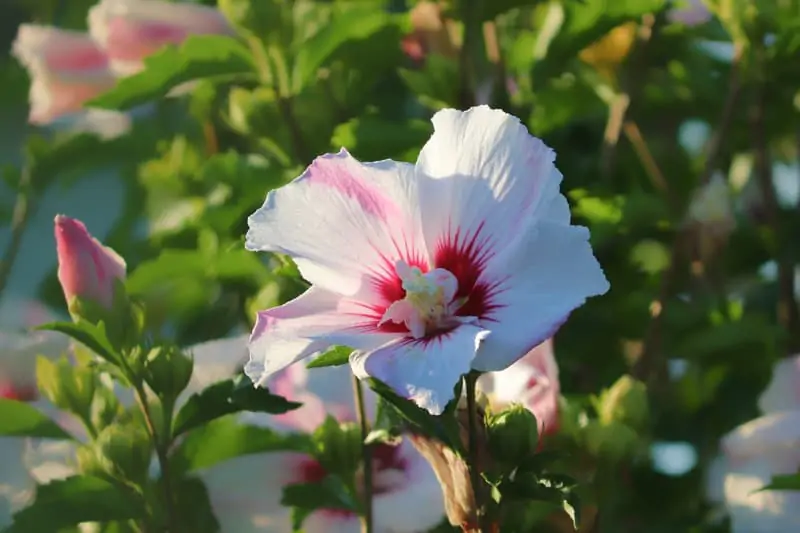
There are several hundred varieties and species of hibiscus bonsai tree and mentioning all of them will require weeks or months. As in any other kind of plant, some species are better than others and this is also the case in the hibiscus plants. Below are some of the hibiscus species or types that are considered best suitable to make a bonsai.
Hibiscus tiliaceus bonsai
Hibiscus tiliaceus bonsai is probably the most efficient option for people who like to have bonsai at home but are a little bit lazy in terms of caring. This type of hibiscus is rare and could be difficult to find but if you can avail of it, this should be your go-to bonsai option especially if you are a beginner.
Hibiscus Taiwan bonsai
Hibiscus Taiwan bonsai is named in this way as it was initially grown, shaped, and was given stylish looks in major parts of Taiwan and China. Its flowers are a little bit different from that of other hibiscus bonsai and can grow long as well.
Sleeping hibiscus bonsai
This bonsai type is widely known as sleeping hibiscus, Turk’s cap, or cardinal’s hat as well. The reason behind these names is that it produces beautiful red color flowers with a shade of shiny maroon and they have a shape a lot like a narrow tunnel.
Dwarf hibiscus bonsai
Dwarf hibiscus bonsai are not small in size by their actual nature but are grown in such a way that they remain small in the pot. They can easily be grown like any other hibiscus type but it is not always possible that they remain in dwarf size as sometimes they tend to grow large in size as well.
Hibiscus syriacus bonsai
Because of its large size, green leaves, bright flowers, upright habit, loose branches, and loose pattern, Syriacus bonsai have a good reputation among various hibiscus bonsai types. It loves to grow in slightly acidic soil and has shown good results in terms of salt tolerance.
Sea hibiscus bonsai
Sea hibiscus bonsai is the perfect option for a plant relatively big than some other bonsai. It requires maximum watering on a regular basis during the initial stage of its growth while you may reduce the watering frequency with time. The light should be given properly as the less you expose to light, the slower it will grow, thrive, and bloom.
Hibiscus acetosella bonsai
Hibiscus Acetosella has a habit of growing fast which makes it different from all other hibiscus types such as dwarf hibiscus. Its leaves look a lot like Japanese maple and can add a touch of nature in any kind of room whether it is for guests, sleep, play, or simply a kitchen.
Hibiscus Rosa Sinensis bonsai
Hibiscus Rosa Sinensis bonsai is one of the most preferred types because it can grow in different sizes as it is a medium to large size bonsai. It is frost-hardy and can also be placed outdoors but this practice is not usually recommended by experts and gardeners.
Hibiscus moscheutos bonsai
Hibiscus Moscheutos is widely preferred by gardeners because of its pinkish-white or purplish-white flowers that look a lot like roses but have fewer petals in a tunnel form. It loves warm weather conditions but is cold hardy and can grow efficiently in moderately cold temperatures.
Hibiscus schizopetalus bonsai
This is probably the smallest and most beautiful bonsai in hibiscus types. It has huge popularity among bonsai lovers as it remains relatively small and grows in unique patterns that look pleasant to the eyes.
Hibiscus bonsai indoor or outdoor?
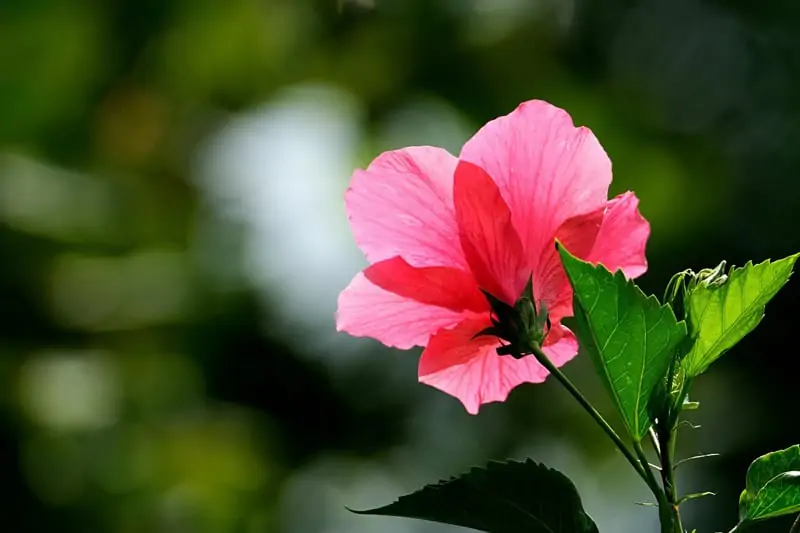
Hibiscus can be cultivated in both outdoor and indoor conditions if you are able to provide it with its desired weather conditions.
Outdoor could be a good option if you live in a region where the temperature remains warm for almost the whole year. You will only need to take your bonsai indoors during the winter season.
But if the temperature can become cold even during the night only, indoors is the best suitable option for growing hibiscus bonsai.
Do hibiscus bonsai trees shed leaves?
Like almost all other bonsai plants, hibiscus bonsai trees can also shed leaves but only in certain conditions.
There are various reasons behind hibiscus bonsai trees shedding leaves but the good thing is that all these reasons can be prevented with a little care and consideration.
Major causes include the following:
- Bonsai is being exposed to frost or extremely cold temperatures.
- Overwatering or underwatering the bonsai plant.
- The inadequate or improper drainage system in the bonsai pot.
- Attacks of pests mainly include scale, aphids, and spiders.
- Bonsai is getting affected by some sort of disease.
Do hibiscus bonsai go dormant?
It can be said that hibiscus bonsai do go dormant with changing seasons. Winter is probably the most common time when hibiscus bonsai almost stops all its growing processes as it has no habit of surviving in cold temperatures.
Some experts even claim that it is best to let hibiscus bonsai remain semi-dormant during the winter days as it will prevent it from shedding leaves and dying at all.
How to make hibiscus bonsai from cutting?
- Start by cutting a good healthy branch from the hibiscus plant that should be around 5 to 7 inches in length.
- Remove leaves from the branches’ cutting while trimming its bark from one end so that the inner softwood can be exposed.
- Apply rooting hormone to the bark-free area so that you can get quick and effective results.
- Fill a pot or container with bonsai soil mixture in its original form. You may also add sand, pebble, moss, and other things to the soil especially if you are a beginner. Going without these extras will also bring good results.
- Make sure you use wiring or maybe stones to keep the cutting steady and stay inside the pot.
- Add water until it begins to drain from the bottom’s drainage holes.
- This will only take about 15 days to grow shoots. Sometimes it may take extra time especially if it is working on growing large roots inside the soil.
Pro Tip: During the initial days, it is extremely important to provide water in a way that it starts draining from the bottom. This practice will mitigate the chances of air pockets inside the soil because if there are any, the chances of insects and pests’ growth can increase too many folds.
How to keep hibiscus bonsai blooming?
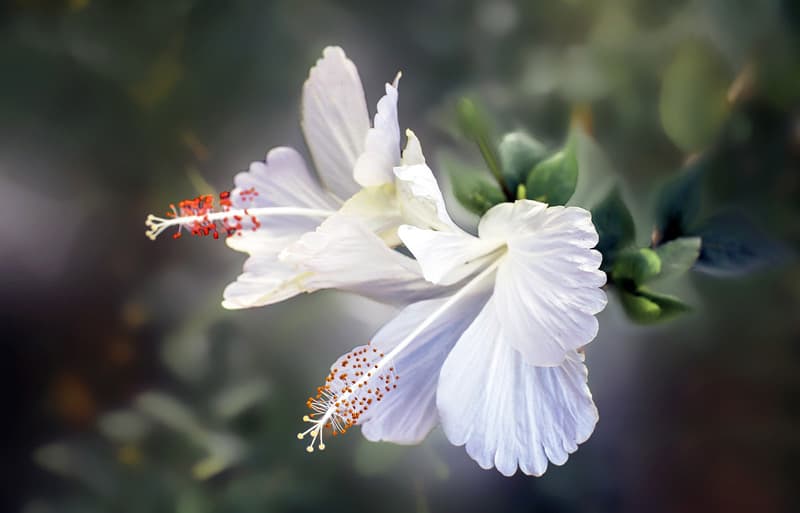
There are a few things that can help you to keep your hibiscus bonsai blooming all year round or for a little bit extra time than its normal routine. Below are the major suggestions that should be considered while working on bonsai’s flowers blooming factors:
- Repotting should be done on a yearly basis. The best time for repotting is from January to February as the plant will tend to grow a bit faster during this part of the year.
- Grow hibiscus bonsai in a bag container or pot because if roots are not able to grow as they want to be, flowers may not bloom to the full extent as well.
- Provide bonsai with some extra water or increase the frequency.
- Increase the time span of sunlight but don’t expose it directly to the sun for a long time as it may burn leaves and flowers.
- During warm days such as April, try to keep bonsai outdoors in full sunlight for about 6 hours a day. The more light you provide, the more flowers will bloom on it.
- Add water-soluble fertilizer to bonsai at least once in 15 days.
- Get rid of dead, burned, or weak flowers from the bonsai as they can sometimes affect all other flowers on that branch as well.
![Pittosporum Bonsai [Pittosporum Tobira]](https://www.bonsai-express.com/wp-content/uploads/2022/05/Pittosporum-Bonsai-365x200.jpg)
![Sorbus Bonsai [Sorbus Aucuparia]](https://www.bonsai-express.com/wp-content/uploads/2022/05/Sorbus-Bonsai-365x200.jpg)
![Tsuga Bonsai [Tsuga Canadensis]](https://www.bonsai-express.com/wp-content/uploads/2022/05/Tsuga-Bonsai-365x200.jpg)
![Tamarix Bonsai [Tamarix Ramosissima]](https://www.bonsai-express.com/wp-content/uploads/2022/05/Tamarix-Bonsai-365x200.jpg)